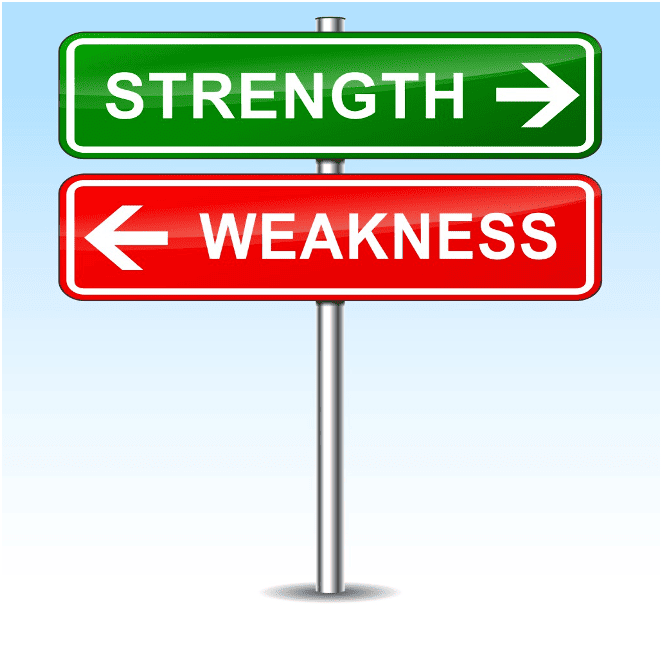Building a Culture of Inclusivity With Emotional Intelligence
In today's diverse and dynamic work environments, building a culture of inclusivity is imperative for fostering a sense of belonging and maximizing the potential of every individual.
Emotional intelligence plays a pivotal role in this process, as it enables us to understand, navigate, and leverage the complexities of human interactions.
However, achieving true inclusivity goes beyond mere awareness of emotions; it necessitates a deep understanding of unconscious bias, empathy, cultural sensitivity, and inclusive leadership.
As organizations strive to create environments where all voices are heard and valued, the integration of emotional intelligence into their culture becomes not only beneficial but essential for success.
Key Takeaways
- Emotional intelligence is crucial for understanding, navigating, and leveraging human interactions in order to promote inclusivity.
- Awareness of unconscious bias and strategies to mitigate its impact are necessary for creating an inclusive and supportive environment.
- Fostering empathy, compassion, and cultural sensitivity is essential for building a culture of inclusivity.
- Developing inclusive leadership practices and resolving conflicts while embracing diversity are key components of creating an inclusive culture.
Understanding Emotional Intelligence
Understanding Emotional Intelligence is crucial for fostering a workplace environment that values empathy, effective communication, and collaboration. Emotional intelligence encompasses self-awareness, which involves recognizing and understanding one's own emotions and how they can impact others. It also includes self-regulation, the ability to manage and control one's emotions and impulses in various situations. This self-regulation is essential for maintaining professionalism and composure in the workplace, even in challenging circumstances.
Moreover, empathy, another key component of emotional intelligence, allows individuals to understand and resonate with the emotions of their colleagues, fostering a supportive and inclusive environment. This understanding enables individuals to respond appropriately to the needs of others, thereby strengthening interpersonal relationships and teamwork.
Additionally, social skills, such as effective communication and conflict resolution, are enhanced through emotional intelligence. Individuals with strong emotional intelligence are adept at building rapport, collaborating with others, and navigating complex social dynamics within the workplace.
Recognizing Unconscious Bias
In today's diverse workplace, recognizing unconscious bias is essential for creating an environment that is truly inclusive and supportive for all employees. Unconscious bias awareness is crucial in fostering a culture where all individuals feel valued and respected.
It is important for organizations to acknowledge that unconscious bias exists and can influence decision-making processes, team dynamics, and overall workplace culture. By understanding and addressing unconscious bias, organizations can implement inclusive decision-making techniques that mitigate its impact. This may involve strategies such as diverse representation in decision-making bodies, structured decision-making processes, and ongoing training to raise awareness about unconscious bias.
Inclusive decision-making techniques aim to counteract the effects of unconscious bias by promoting fairness and equity. This can be achieved through implementing practices that encourage diverse perspectives, actively challenging assumptions, and creating a supportive environment for open dialogue.
Fostering Empathy and Compassion
To cultivate a workplace culture of inclusivity, it is imperative to prioritize fostering empathy and compassion among all employees.
Empathy building is a fundamental aspect of creating a supportive and understanding work environment. It involves actively listening to colleagues, seeking to understand their perspectives, and acknowledging their feelings. This can be achieved through empathy training, workshops, and open discussions that encourage employees to share their experiences and perspectives. By fostering empathy, employees can better relate to one another, build stronger connections, and develop a deeper sense of understanding.
In addition to empathy building, compassion cultivation is equally important in creating an inclusive workplace culture. Compassion involves not only understanding others' emotions but also taking action to support and uplift them. Encouraging acts of kindness, promoting a supportive work environment, and providing resources for employees to seek help when needed are all essential components of compassion cultivation.
Leaders play a crucial role in modeling compassionate behavior and setting the tone for the entire organization.
Communicating With Cultural Sensitivity
As we explore the importance of communicating with cultural sensitivity, it is crucial to consider the significance of nonverbal cues in communication.
Understanding diverse communication styles is also essential for fostering an inclusive environment where individuals from different cultural backgrounds feel understood and valued.
These points will be vital in developing effective strategies for promoting cultural sensitivity in our interactions and workplaces.
Nonverbal Cues in Communication
Understanding and interpreting nonverbal cues is essential for effective cross-cultural communication in order to convey respect and understanding. Improving understanding and interpreting body language can bridge the gap in intercultural communication. Nonverbal cues such as gestures, facial expressions, and eye contact vary widely across cultures and can greatly impact the interpretation of a message. To highlight the importance of nonverbal cues in communication, let's look at the following table:
| Nonverbal Cue | Interpretation in Some Cultures |
|---|---|
| Direct Eye Contact | Sign of confidence in the West |
| Disrespectful in some Asian cultures | |
| Smiling | Indicates happiness in the West |
| Can signify nervousness in some Eastern cultures | |
| Hand Gestures | Used to emphasize speech in Italy |
| Considered rude in some Middle Eastern cultures |
Being mindful of these differences can help in navigating cross-cultural interactions with sensitivity and understanding.
Understanding Diverse Communication Styles
Diverse communication styles necessitate a nuanced understanding of cultural sensitivities to facilitate effective cross-cultural interactions. Cross-cultural communication involves navigating a wide range of communication styles, including direct and indirect, high and low context, and verbal and nonverbal expressions.
Interpersonal dynamics play a crucial role in understanding diverse communication styles, as individuals from different cultural backgrounds may have varying preferences for communication patterns, such as assertiveness, hierarchy, and emotional expression. It is essential to approach cross-cultural communication with empathy, curiosity, and a willingness to adapt to different communication styles.
Developing cultural sensitivity enables individuals to communicate more effectively across diverse cultural contexts, fostering mutual understanding and collaboration. By recognizing and respecting diverse communication styles, organizations can create inclusive environments where everyone feels valued and understood.
Developing Inclusive Leadership Practices
As organizations seek to foster a culture of inclusivity, developing inclusive leadership practices becomes paramount. This involves leaders actively promoting and embracing diversity, equity, and inclusion within their teams and decision-making processes.
Furthermore, it entails the continuous development of cultural competence and the ability to navigate and appreciate diverse perspectives and experiences.
Leadership and Inclusion
To cultivate a culture of inclusivity, it is essential for organizations to develop and implement inclusive leadership practices. Empowering leaders to champion diversity and inclusion within the workplace is crucial for fostering belonging among all employees.
This can be achieved through strategies for change that involve creating a safe and supportive environment where everyone's voice is heard and valued. Building trust is fundamental in inclusive leadership, as it enables open communication and transparency, which are essential for creating an inclusive culture.
Leaders need to actively listen to diverse perspectives and demonstrate a commitment to fairness and equity. By embracing inclusive leadership practices, organizations can create an environment where all individuals feel respected, valued, and included, ultimately leading to improved collaboration, innovation, and overall success.
Inclusive Decision-Making
How can inclusive decision-making practices be developed to enhance leadership's ability to foster a culture of belonging and equity within the organization? Inclusive decision-making involves actively seeking input from a diverse range of perspectives and experiences. By incorporating inclusive collaboration, leaders can ensure that decisions consider the varied needs and concerns of all employees, leading to more equitable outcomes. To demonstrate the importance of diverse perspectives in decision-making, consider the following table:
| Benefits of Inclusive Decision-Making |
|---|
| Fosters Innovation |
| Enhances Problem-Solving |
| Increases Employee Engagement |
| Builds a Culture of Belonging |
| Improves Decision Quality |
Cultural Competence Development
In order to cultivate a culture of inclusivity, it is imperative for leaders to prioritize the development of cultural competence, integrating inclusive leadership practices that acknowledge and embrace the diverse backgrounds and perspectives of all employees. This can be achieved through:
- Cultural sensitivity training: Providing leaders with the necessary tools and knowledge to understand and respect different cultural norms and practices within the workplace.
- Diversity training programs: Implementing structured programs to educate leaders on the value of diversity and how to effectively manage diverse teams.
- Promoting inclusive communication: Encouraging leaders to adopt communication strategies that consider the cultural diversity of their teams, ensuring all voices are heard and respected.
- Fostering a culture of empathy: Encouraging leaders to develop empathy towards employees from different backgrounds, promoting understanding and inclusivity within the organization.
Resolving Conflict Through Emotional Intelligence
Building a culture of inclusivity requires individuals to develop their emotional intelligence, particularly in the context of resolving conflicts. Conflict resolution through emotional intelligence involves the ability to navigate and resolve interpersonal disputes in a constructive and empathetic manner. Emotional awareness plays a pivotal role in this process, as it allows individuals to recognize and understand their own emotions and those of others involved in the conflict.
When faced with a conflict, individuals with high emotional intelligence can effectively manage their emotions, remain calm, and approach the situation with a problem-solving mindset. By recognizing the emotions driving the conflict, they can respond in a way that de-escalates tension and fosters open communication. Additionally, individuals with developed emotional intelligence can empathize with the perspectives of others, which is crucial for finding mutually beneficial resolutions.
Moreover, emotional intelligence enables individuals to communicate assertively yet diplomatically, express their concerns without escalating the conflict, and actively listen to the viewpoints of others. This approach not only resolves the immediate conflict but also strengthens relationships and fosters a culture of respect and understanding within the organization.
Embracing Diversity and Difference
Recognizing the value of emotional intelligence in resolving conflicts, organizations can further foster a culture of inclusivity by embracing diversity and difference within their teams and communities. Embracing diversity is crucial for creating a dynamic and innovative environment where everyone feels valued and respected.
To achieve this, organizations can:
- Celebrate Differences: Encourage the appreciation of diverse backgrounds, experiences, and perspectives. Celebrating differences can lead to a more inclusive and understanding work culture.
- Dismantle Stereotypes: Actively work to break down stereotypes and biases within the organization. This involves promoting awareness and understanding of the harmful effects of stereotypes and fostering an environment where individuals are seen for their unique qualities.
- Promote Cross-Cultural Understanding: Encourage open discussions and learning opportunities that promote understanding and appreciation of various cultures and traditions. This can help bridge cultural gaps and promote unity within diverse teams.
- Provide Inclusive Training: Offer training programs that focus on diversity, equity, and inclusion to educate employees and leaders on the importance of embracing differences and creating an inclusive environment.
Creating Psychological Safety
Fostering psychological safety in the workplace is essential for cultivating an environment where individuals feel empowered to express their ideas and concerns without fear of negative repercussions. Trust building and understanding team dynamics are crucial components in creating psychological safety. This can be achieved through open communication, active listening, and promoting a culture of empathy and respect. Diversity training plays a key role in enhancing psychological safety by increasing awareness of different perspectives and experiences, thereby promoting a more inclusive and accepting environment.
| Trust Building | Team Dynamics | Psychological Safety |
|---|---|---|
| Open communication | Collaboration and respect | Empowerment and trust |
| Transparency | Clear roles and goals | Freedom to express |
| Vulnerability | Conflict resolution | Supportive environment |
Promoting Collaboration and Teamwork
To encourage a collaborative and cohesive work environment, it is imperative to emphasize the value of teamwork and the collective effort in achieving organizational objectives. Promoting collaboration and teamwork can significantly enhance productivity and innovation within a diverse workforce.
Here are four essential strategies for fostering collaboration and teamwork:
- Team building activities: Organizing team-building exercises and events can help employees develop stronger relationships, improve communication, and build trust. These activities can help break down barriers and create a more cohesive work environment.
- Diversity in teamwork: Embracing diversity and promoting an inclusive environment allows for a wide range of perspectives and ideas. It's essential to create opportunities for individuals from diverse backgrounds to work together, fostering a culture of respect and understanding.
- Open communication: Encouraging open and transparent communication within teams can lead to more effective collaboration. Employees should feel comfortable sharing their thoughts and ideas, knowing that their contributions are valued.
- Recognition and rewards: Acknowledging and rewarding collaborative efforts and successful teamwork can motivate employees to continue working together towards common goals. Recognizing the achievements of teams fosters a culture of appreciation and mutual support.
Implementing these strategies can create a work environment where collaboration and teamwork thrive, leading to greater success for the organization as a whole.
Measuring and Sustaining Inclusivity
To successfully measure and sustain inclusivity within an organization, it is essential to establish inclusivity metrics for tracking progress. These metrics can provide valuable insights into the effectiveness of diversity and inclusion initiatives and help identify areas for improvement.
Additionally, continuous improvement through feedback and creating inclusive team dynamics are crucial for sustaining a culture of inclusivity.
Inclusivity Metrics for Tracking
Tracking inclusivity within an organization requires the establishment of clear and measurable metrics to assess and sustain progress in fostering a diverse and inclusive culture.
To effectively track inclusivity metrics, organizations can consider the following key factors:
- Representation: Monitoring the diversity of the workforce at all levels of the organization, including leadership positions.
- Employee Feedback: Implementing regular surveys and feedback mechanisms to gauge the sense of belonging and inclusivity impact experienced by employees.
- Promotion and Development: Tracking the distribution of opportunities for career growth and advancement among different demographic groups.
- Retention Rates: Analyzing the turnover rates among diverse groups to assess the inclusivity and effectiveness of retention strategies.
Continuous Improvement Through Feedback
Continuous improvement in fostering inclusivity can be achieved through the systematic collection and analysis of feedback from employees at all levels of the organization. Establishing a feedback culture allows for the continuous enhancement of inclusivity initiatives. By actively seeking and valuing input from employees, organizations can identify areas for improvement and address concerns effectively. This not only demonstrates a commitment to inclusivity but also empowers employees to contribute to a more inclusive work environment. To emphasize the significance of feedback in fostering inclusivity, consider the following table:
| Benefits of Feedback Culture | How it Supports Continuous Improvement |
|---|---|
| Encourages open communication | Identifies areas for enhancement |
| Fosters trust and transparency | Enables targeted inclusivity initiatives |
| Empowers employees | Promotes ongoing growth and development |
Establishing a robust feedback culture is essential for driving continuous improvement in fostering inclusivity within an organization.
Creating Inclusive Team Dynamics
Creating and maintaining inclusive team dynamics is essential for fostering a culture of diversity and belonging within an organization.
To achieve this, the following steps are crucial:
- Building trust: Establish open communication channels and encourage team members to express themselves freely without fear of judgment.
- Promoting belonging: Encourage team members to share their unique perspectives and actively participate in decision-making processes.
- Creating a sense of equity: Ensure that all team members have equal opportunities to contribute and grow within the organization.
- Embracing differences: Cultivate an environment where diverse backgrounds, experiences, and ideas are celebrated and leveraged for the benefit of the team.
Conclusion
In conclusion, building a culture of inclusivity through emotional intelligence is essential for creating a welcoming and supportive environment. By recognizing unconscious bias and fostering empathy, organizations can promote collaboration and teamwork while embracing diversity and difference.
Communicating with cultural sensitivity and developing inclusive leadership practices are crucial for creating psychological safety. Measuring and sustaining inclusivity is key to ensuring that everyone feels valued and respected in the workplace.
Ultimately, emotional intelligence plays a vital role in creating a culture of inclusivity.







